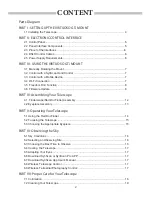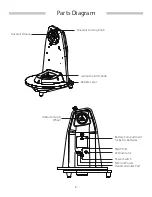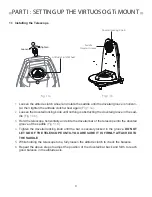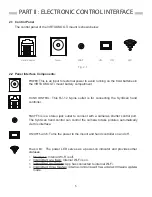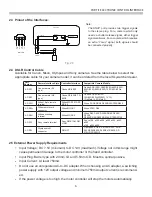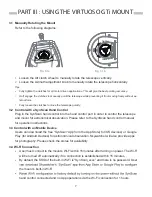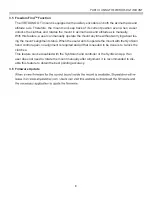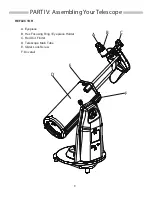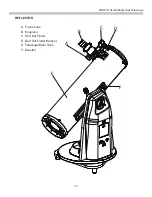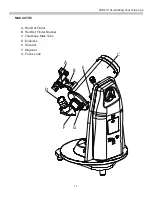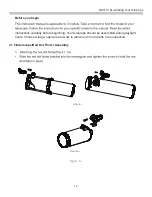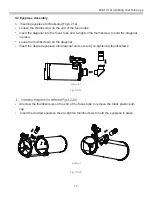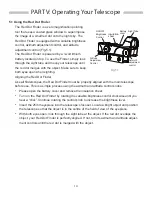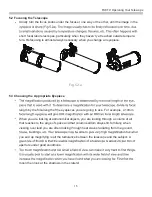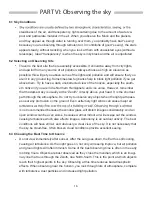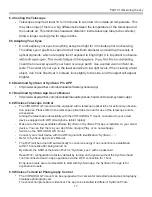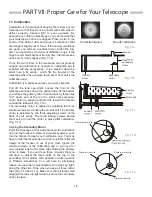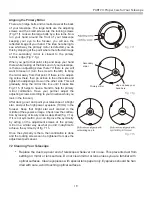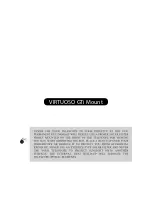
16
PART VI: Observing the sky
6.1 Sky Conditions
steadiness of the air, and transparency, light scattering due to the amount of water va-
pour and particulate material in the air. When you observe the Moon and the planets,
and they appear as though water is running over them, you probably have bad “seeing”
because you are observing through turbulent air. In conditions of good “seeing”, the stars
appear steady, without twinkling, when you look at them with unassisted eyes (without a
telescope). Ideal “transparency” is when the sky is inky black and the air is unpolluted.
Do not view immediately after sunset. After the sun goes down, the Earth is still cooling,
causing air turbulence. As the night goes on, not only will seeing improve, but air pollution
and ground lights will often diminish. Some of the best observing time is often in the early
morning hours. Objects are best observed as they cross the meridian, which is an imagi-
nary line that runs through the Zenith, due North-South. This is the point at which objects
reach their highest points in the sky. Observing at this time reduces bad atmospheric
effects. When observing near the horizon, you look through lots of atmosphere, complete
with turbulence, dust particles and increased light pollution.
6.2 Selecting an Observing Site
Travel to the best site that is reasonably accessible. It should be away from city lights,
and upwind from any source of air pollution. Always choose as high an elevation as
possible; this will get you above some of the lights and pollution and will ensure that you
aren’t in any ground fog. Sometimes low fog banks help to block light pollution if you get
above them. Try to have a dark, unobstructed view of the horizon, especially the south-
ern horizon if you are in the Northern Hemisphere and vice versa. However, remember
that the darkest sky is usually at the “Zenith”, directly above your head. It is the shortest
path through the atmosphere. Do not try to observe any object when the light path pass-
es near any protrusion on the ground. Even extremely light winds can cause major air
is not recommended because the window glass will distort images considerably. And an
open window can be even worse, because warmer indoor air will escape out the window,
causing turbulence which also affects images. Astronomy is an outdoor activity. The best
conditions will have still air, and obviously, a clear view of the sky. It is not necessary that
the sky be cloud-free. Often broken cloud conditions provide excellent seeing.
6.3 Choosing the Best Time to Observe

